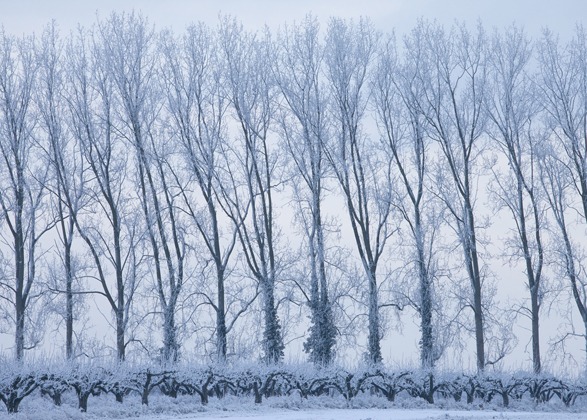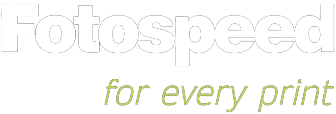The Landscape Photographer's Calendar: what to shoot in December

Tony Worobiec is a Fellow of the Royal Photographic Society and one of our Fotospeed photographers. He has won awards for photography both in the UK and internationally, and has authored 16 books. In this blog post, adapted from his RPS workshop, "The Landscape Photographers Calendar", Tony tells you what to look out for in December. Tony uses Fotospeed’s Platinum Baryta and Platinum Matt.
-->
Tony Worobiec is a Fellow of the Royal Photographic Society and one of our Fotospeed photographers. He has won awards for photography both in the UK and internationally, and has authored 16 books. In this blog post, adapted from his RPS workshop, "The Landscape Photographers Calendar", Tony tells you what to look out for in December. Tony uses Fotospeed’s Platinum Baryta and Platinum Matt.
You can find out more about Tony here.
So, here we are at the end of the year, and for those of you landscape workers who enjoy winter, the wait is over. Winter of course is parodied by snow, but as most of us are well aware there is preciously little of the stuff around in December unless you are prepared to travel a little – a point I will be making later in this blog. A better way of viewing this month is to appreciate that it will be cold – which of course will have a profound effect on the appearance of the landscape. We will experience our shortest days, the trees will be stripped of their foliage, and don't forget Christmas! Whilst this will not greatly affect the rural landscape, it is amazing just how vibrant and colourful our towns and cities appear at this wonderfully festive time. Whilst I'm on the subject, a very Happy Christmas to you all.

Frosty conditions
Whilst few of us will see any significant snowfall throughout the month of December, we are certainly likely to experience very cold nights, resulting in beautiful frost-covered landscapes in the morning which can utterly transform an otherwise uninteresting landscape. An important point to remember is that frost can very quickly disappear, so aim to get up early and keep your travel distance to a minimum; this shot was taken just three miles from where I live. Heavy frosts are often accompanied by a thin veil of mist which has the capacity to simplify the landscape. Images such as this can so easily be converted to black and white due to the restricted colour palette. Personally, I rather enjoy the nuanced hues these wonderful conditions create, but it's always great to have a choice. But how do you know when you'll be able to capture a frosted landscape? Predicting it is easy – it is most likely to occur on a still night, usually when we are experiencing high pressure and when there is very little cloud.

Snow in December
For those of us who live in the south of the UK, the chances of witnessing snow are highly unlikely, however the further north you are, and especially if you are on high ground, your chances are greatly improved. One location that regularly experiences these conditions is Rannoch Moor in Scotland. However, when it does snow, expect to see lots of other photographers appear like a rash. Nevertheless, with a careful bit of framing it is possible to capture a view which completely excludes other people. Ideally, these conditions are best exploited around dawn, which comes conveniently late this far north at this time of the year. This shot was taken not long after sunrise, thus allowing the low rays of light to illuminate the rich textures in the foreground. In this example, I enjoyed the way the structure of the rocks in the foreground appears to mimic the distant mountains.

The natural rhythm of trees
After the showy colours of autumn, it is very easy to dismiss a grouping of defoliated trees, but it is only when they are stripped of their leaves that we are able to appreciate the wonderful rhythms they create. This is particularly noticeable with a line of deciduous trees. As readers of my previous blogs will appreciate, I am a great fan of using a long telephoto lens, as it has the capacity to compress the landscape in a rather interesting way. As ever, lighting is an important consideration. In this example it was overcast, therefore the incidence of irritating shadows was kept to a minimum. Sometimes of course, shadows can help the composition by introducing a further layer of ‘rhythm’. This image was taken from a high vantage point which made my task considerably easier.

The negative image
For those of you who use film, or possibly have used film in the past, you will no doubt have looked at a negative, marvelled at its enigmatic beauty, but then experienced a sense of anti-climax when seeing the final print as a positive. Why not just leave it as a negative you may well ask? There is a tradition for this in photography – the highly celebrated early 20th century photographer, Man Ray learned to produce an inter-negative that allowed him to do precisely that. If you are shooting digital (and most of us are), this technique can be very easily mimicked in Photoshop. With your image on screen, go to Image > Adjustments > Invert. It really is that simple. Why I find this technique so useful in December is that I frequently find myself photographing skeletal trees which, when negativized in this way, seem to exude the spirit of winter much more effectively than when the image is presented as a positive. Incidentally this image came up a treat printed on Fotospeed's Metallic Lustre.

The illuminated urban landscape
December is the perfect time of year to photograph the urban environment. First, because nightfall comes so early, it allows us to take interesting nocturnal shots of the city when it is still relatively busy. Second, because we are rapidly approaching Christmas, many of the buildings will be lavishly illuminated, which makes the task of photographing them considerably easier. In order to get a reasonably panoramic view, it helps to find a higher vantage point. If you are in a busy city, it is worth tracking down a useful location in daylight and returning later to take your shot. Sometimes, interesting shots can be taken from the upper floor of a high building. Moreover, if you are shooting from a higher vantage point, then there is little need to include the sky in your composition, which makes the exposure considerably easier. Your file will still be quite 'contrasty', but this can be easily remedied in the RAW Convertor or in Lightroom.
Thank you Fotospeed!
Wow, that's it! Thank you for reading these monthly blogs – I sincerely hope they have proven to be useful. I would also like to thank Toby and the team at Fotospeed for giving me the opportunity to communicate with you in this way, and to Yasemin who continues to do such a fabulous job with the editing. I'm so proud to be associated with Fotospeed not only because of the superb quality of their ink-jet and darkroom papers, but also because their customer service consistently remains second to none. I'm sure you agree!
Want more ideas on how to improve your photography and prints? Check out the rest of our blog, or get in touch to see how Fotospeed can help!
If you would like to stay on top of all the latest information from Fotospeed don't forget to sign up to our Newsletter.



